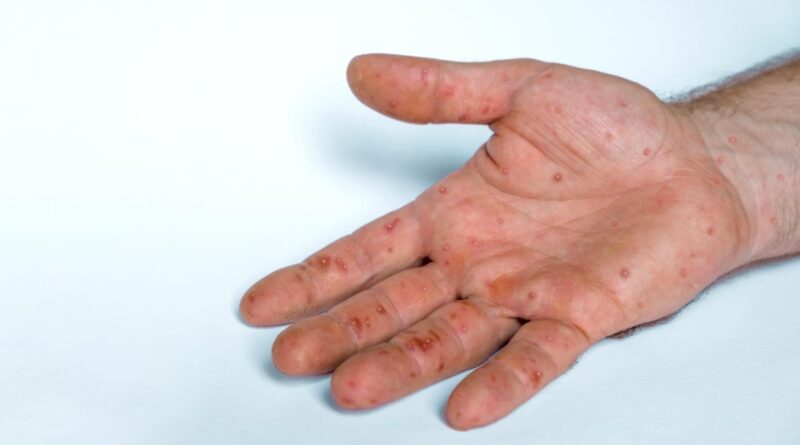Monkeypox Is Continuing to Surge Across the U.S.

Reports of monkeypox are multiplying around the world and the United States. Worldwide, there have been over 10,000 cases reported of the viral illness, including more than 1,400 in the U.S. alone. And so far, mass vaccination efforts in early hot spots like New York City have been stymied by website crashes and low supply.
According to the Centers for Disease Control and Prevention, there have been 1,470 confirmed cases of monkeypox in the U.S. as of July 14—a nearly 40% jump from the day before. Cases have been found in over 40 states, as well as Washington D.C. and Puerto Rico, with South Dakota reporting its first case yesterday. New York has reported the most so far, with over 400 cases, followed by California (180 cases) and Illinois (160 cases).
Monkeypox is thought to be native to rodents living in Africa and until recently was only occasionally transmitted to humans following its discovery in the 1950s. Since 2018, it’s been endemic in some parts of Africa, primarily Nigeria, but this year has seen an unprecedented level of spread outside of Africa and sustained human-to-human transmission of the virus. Aside from the U.S, the United Kingdom, Spain, and Germany have reported the most cases.
Infection causes flu-like illness followed by distinctive and contagious rashes that can take weeks to scab over and fall off. The current strains of monkeypox circulating around the world belong to a less deadly form of the virus, and cases rarely lead to life-threatening illness, but there have been over 70 deaths reported in Africa this year.
There is ongoing speculation over why monkeypox has only now begun spreading regularly between people. A new and third lineage of the virus does appear to have formed since the start of the 2022 outbreak, though it’s not known if this lineage is any more transmissible than before. The waning of population immunity to smallpox, a related but extinct disease that people were routinely vaccinated against decades ago, may have also aided its transmission. But perhaps the most key reason is that the virus is now primarily being transmitted through close and prolonged contact during sex.
G/O Media may get a commission
Evidence from current outbreaks has shown that the virus is predominantly spreading among men who have sex with men, particularly men who have had multiple recent sexual partners. Some cases have also been found to develop rashes specifically around their genitalia or anus, further emphasizing the role of sexual transmission. Importantly, though, the virus can spread to anyone through close contact and possibly respiratory droplets as well, and there have been some reports of women contracting monkeypox as well.
While monkeypox isn’t as contagious or likely to cause as much illness and death as covid-19, it’s certainly no picnic, with one recent sufferer describing it as the “worst pain” they’ve ever experienced. The major worry is that these outbreaks will grow too large to contain before the virus spills back into animals or becomes firmly established in humans. Once that happens, there’ll be one more germ to add to the growing pile of infectious diseases that we have to worry about on a regular basis.
Perhaps the only encouraging thing about this situation is that we do have effective vaccines that can prevent monkeypox, thanks to our earlier efforts against smallpox. But getting them to the groups most at risk from monkeypox hasn’t been easy.
Just this week, the New York City health department’s website for scheduling monkeypox vaccinations crashed for the second time following its launch earlier this month. And in San Francisco, officials are already begging the federal government for more vaccine doses. In late June, the White House pledged to roll out 1.6 million doses of the JYNNEOS vaccine to the public by the fall, and the government has ordered another 2.5 million doses in July that should arrive through early 2023. But for now, demand is far higher than the supply.

